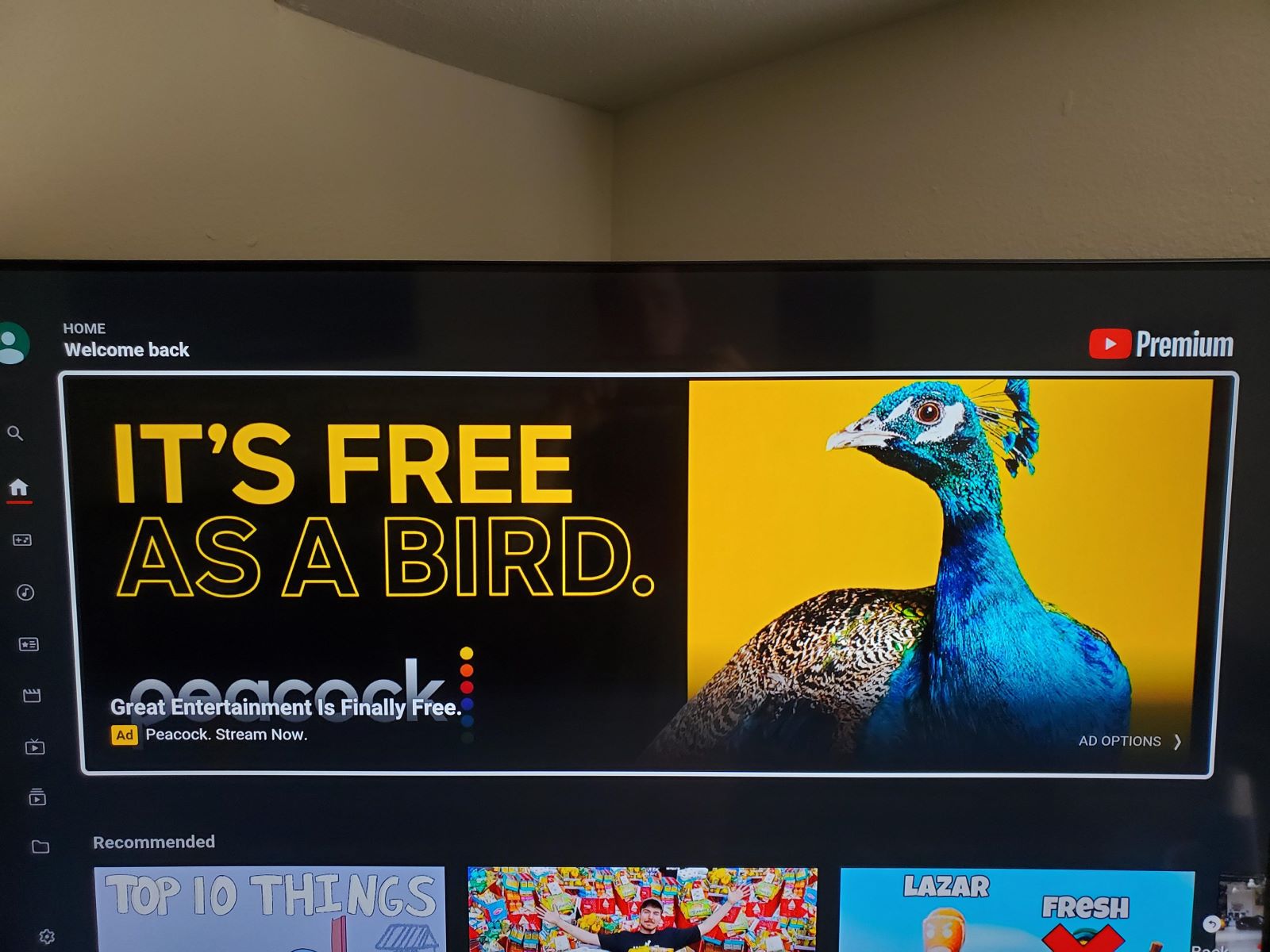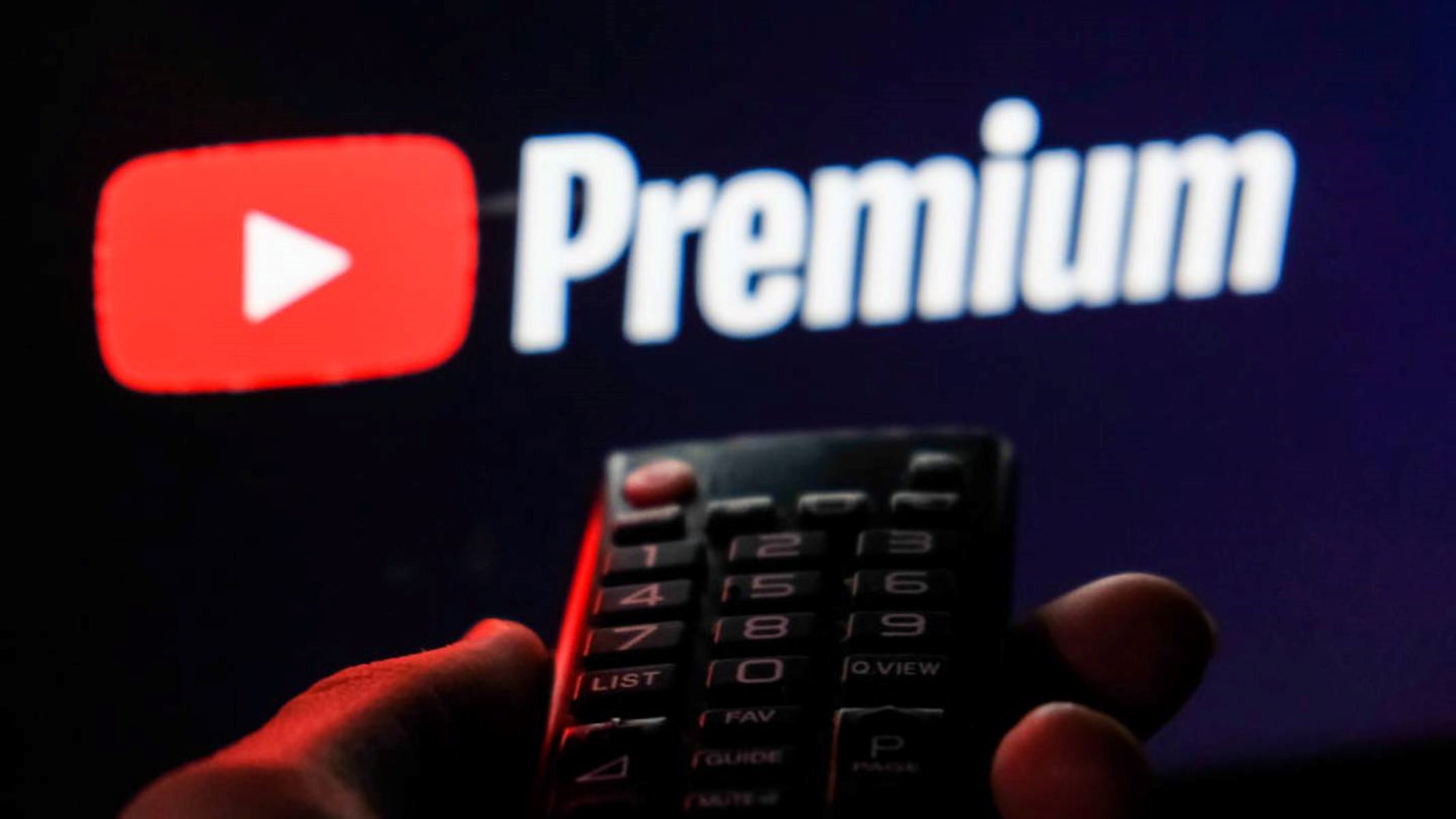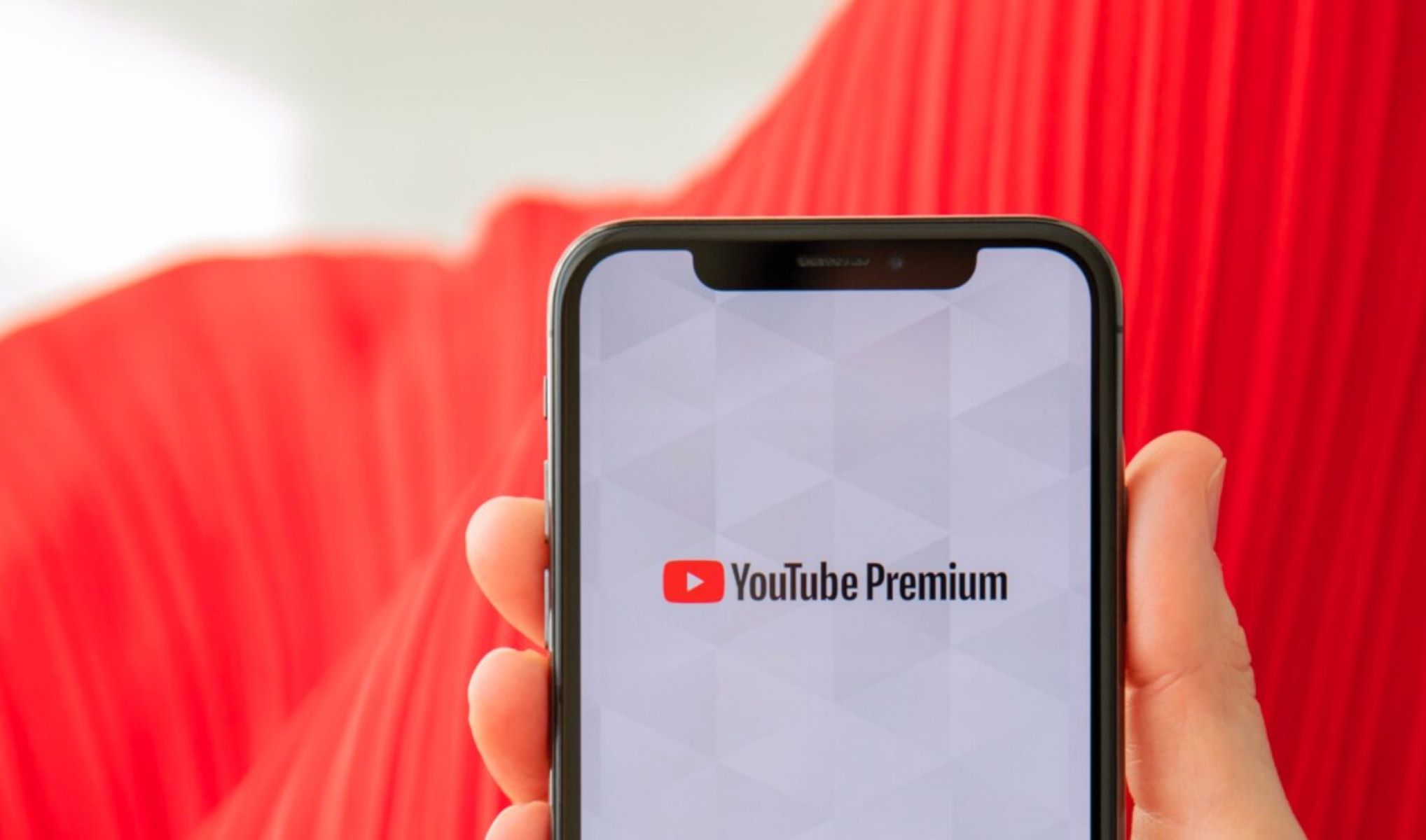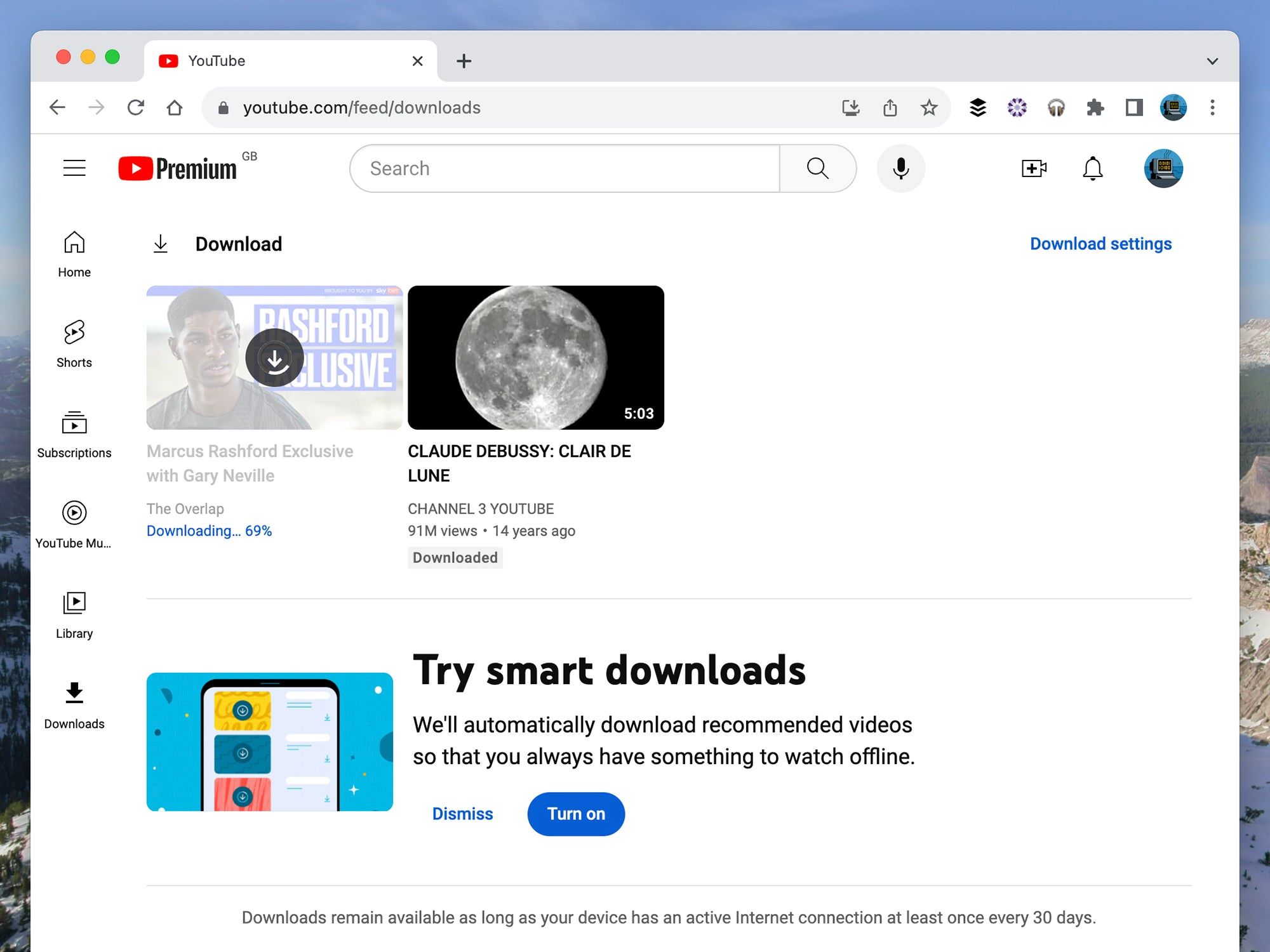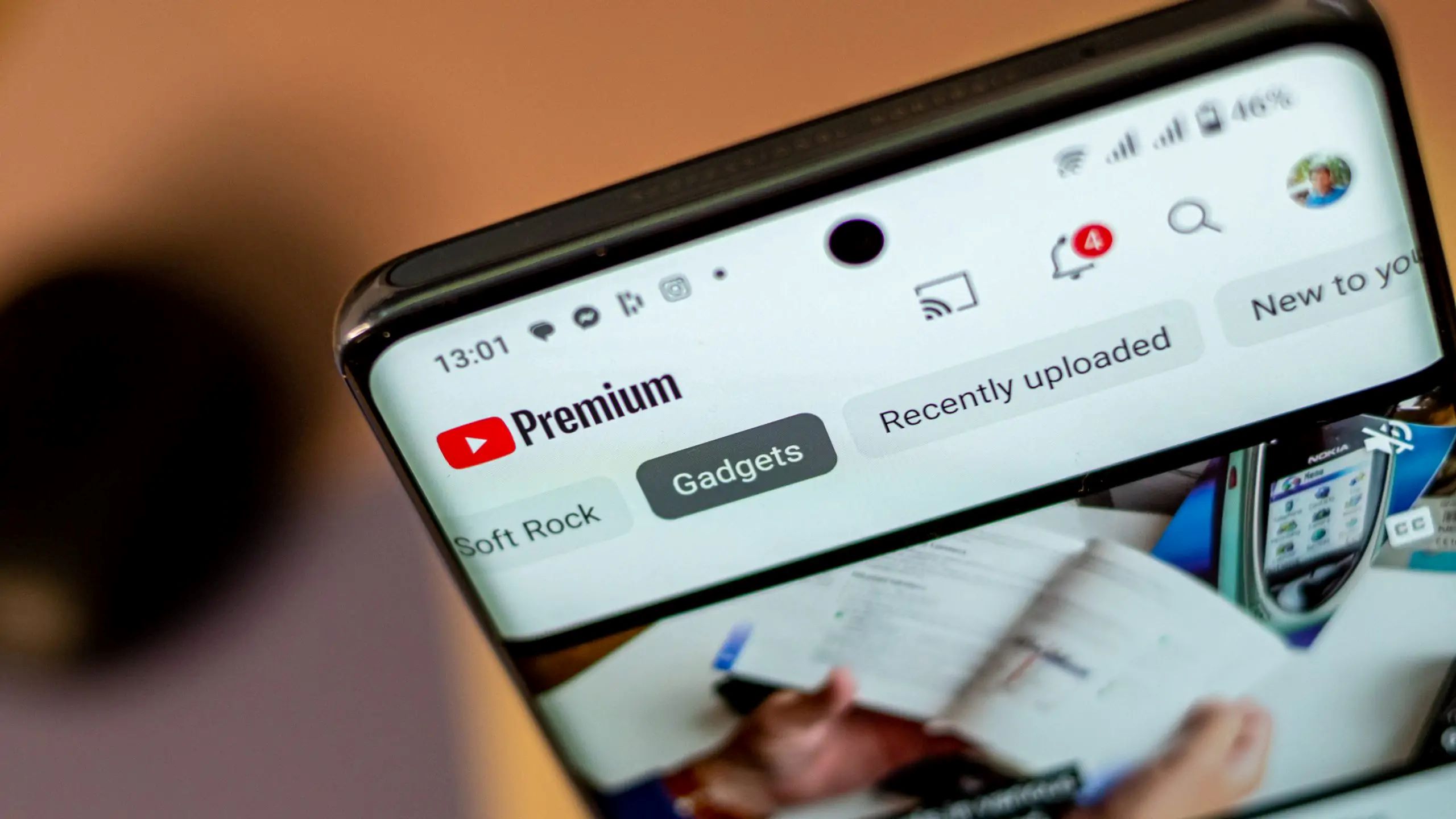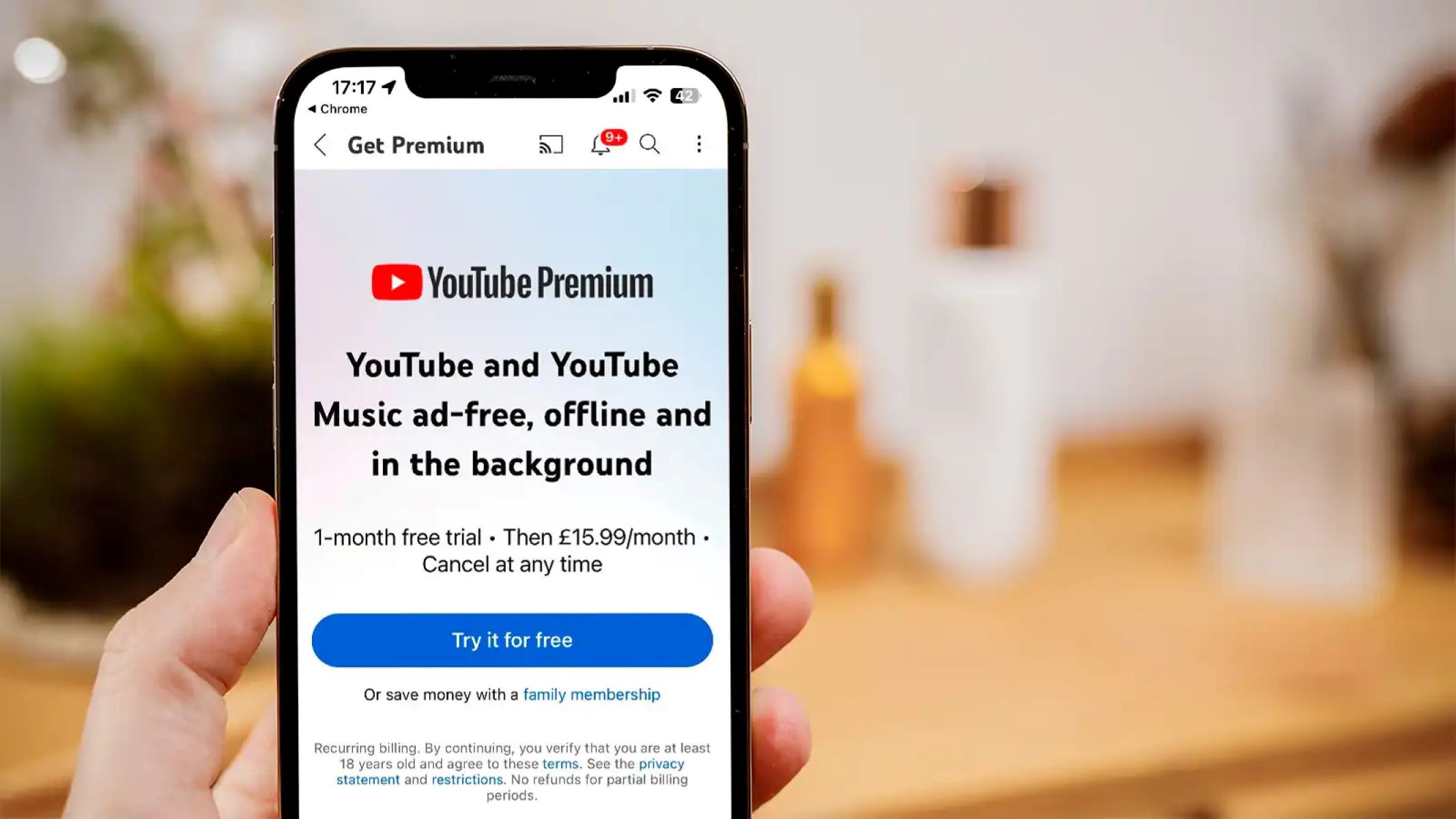Introduction
The rise of streaming services has revolutionized the way we consume entertainment content. From movies and TV shows to music and podcasts, these platforms offer a convenient and accessible way to enjoy our favorite media. YouTube, the world’s largest video sharing platform, has been at the forefront of this digital revolution.
YouTube Premium, formerly known as YouTube Red, is a subscription-based service offered by YouTube to enhance the user experience. With YouTube Premium, users can enjoy an ad-free viewing experience, access to original content, and the ability to download videos for offline viewing. However, recently, YouTube Premium announced a price increase, leaving many users wondering why the change was implemented.
This article aims to delve into the factors that contributed to the price increase of YouTube Premium. By understanding these factors, we can gain insights into the challenges and complexities that streaming platforms face in delivering high-quality content to users. Additionally, we will explore the implications of this price hike on creators and viewers and consider alternatives that users may consider in light of the increased costs.
As the digital landscape continues to evolve, it is crucial for consumers to be aware of the changes taking place in the streaming industry. By staying informed about pricing adjustments and the reasoning behind them, users can make informed decisions about which platforms and services best suit their needs and budgets.
The Rise of Streaming Services
Over the past decade, streaming services have experienced a significant surge in popularity, disrupting traditional media consumption patterns. This rise can be attributed to several factors, including technological advancements, changing consumer preferences, and the proliferation of high-speed internet connectivity.
Streaming services offer the convenience of accessing a vast library of content on-demand, allowing users to watch or listen to their favorite shows, movies, and music whenever and wherever they choose. Gone are the days of scheduled programming or physical media purchases. With just a few clicks, users can instantly access a wide range of entertainment options.
One of the key players in the streaming industry is YouTube, which began as a platform for user-generated content. As the platform gained popularity, it expanded to include professional content creators, music videos, and official channels for various organizations and celebrities. YouTube’s vast library of videos and the ability to discover content across different genres helped position it as a leading streaming platform.
In response to the growing demand for premium features and an enhanced user experience, YouTube introduced YouTube Premium. This subscription-based service provided users with an ad-free viewing experience and access to exclusive content, such as original shows and movies. YouTube Premium also allowed users to download videos for offline viewing, catering to those who wanted to enjoy content on the go without relying on an internet connection.
The success of YouTube Premium and other streaming services inspired a wave of competitors, with companies like Netflix, Hulu, and Amazon Prime Video vying for a share of the market. This intensified competition drove innovation and led to the development of more diverse content offerings, improved streaming quality, and user-friendly interfaces.
As streaming services continue to evolve and gain traction, traditional cable and satellite TV providers are facing increasing pressures to adapt and compete in the digital landscape. The convenience, affordability, and personalized nature of streaming services have made them an attractive option for consumers who want greater control over their entertainment choices.
With the rise of streaming services, including YouTube Premium, the way we consume media has fundamentally changed. It has empowered users with greater choice, flexibility, and access to a wide range of content. However, the recent price increase of YouTube Premium has raised questions and sparked discussions about the factors that led to this adjustment.
YouTube Premium: A Brief Overview
YouTube Premium, formerly known as YouTube Red, is a subscription-based service offered by YouTube to enhance the user experience on its platform. With YouTube Premium, users gain access to a range of exclusive features and content that go beyond the capabilities of the free version of YouTube.
One of the primary benefits of YouTube Premium is the removal of ads. Without ads interrupting their viewing experience, users can enjoy uninterrupted video playback, enhancing their immersion and engagement with the content. Ad-free videos not only save users valuable time, but they also improve the overall viewing experience by eliminating potentially disruptive and irrelevant content.
In addition to ad-free viewing, YouTube Premium offers the ability to download videos for offline playback. This feature allows users to save their favorite videos to their devices and watch them without an internet connection. Whether on a long flight, a road trip, or in areas with limited internet access, users can still enjoy their favorite YouTube content, even when offline.
Furthermore, YouTube Premium provides access to original content produced exclusively for Premium subscribers. These original shows and movies, spanning various genres and topics, showcase the creativity and talent of YouTube creators and provide a unique and engaging viewing experience.
Another noteworthy feature of YouTube Premium is its inclusion of YouTube Music Premium. Subscribers gain access to an extensive library of music, ad-free listening, and the ability to download songs for offline playback. YouTube Music Premium competes with other music streaming services by offering a diverse range of music, personalized recommendations, and integration with the YouTube platform.
YouTube Premium is available across various devices, including smartphones, tablets, desktops, and smart TVs. This multi-platform accessibility ensures that users can enjoy their premium experience wherever they choose to consume their content.
It is important to note that YouTube Premium operates as a separate subscription from YouTube TV, which is a live television streaming service offered by YouTube. Although they share the YouTube name, these services cater to different preferences and needs. YouTube Premium focuses on enhancing the ad-free and exclusive content experience, while YouTube TV offers access to live television channels.
As YouTube continues to expand its offerings and improve the user experience, YouTube Premium remains a sought-after subscription for users who value ad-free and enhanced content consumption. However, with the recent price increase, it is essential to delve into the factors that contributed to this adjustment and consider its implications for creators and viewers alike.
Factors Contributing to the Price Increase
The decision to increase the price of YouTube Premium was influenced by several factors that contribute to the overall cost of providing the service and ensuring its sustainability. These factors include licensing fees, copyright issues, original content production costs, and expanded features and services.
One significant factor that contributed to the price increase is the licensing fees that YouTube must pay to copyright holders for the use of their content. As YouTube continues to grow and offer more premium content, the costs associated with acquiring licenses for music, movies, and TV shows also increase. These licensing fees are necessary to ensure that creators are fairly compensated for their work and to avoid copyright infringement issues.
Copyright issues also play a role in the price increase. YouTube has been under scrutiny and faced legal challenges regarding copyright violations in the past. To address these concerns and provide a safer and more legitimate platform, YouTube has implemented stricter policies and content recognition systems. These measures require significant investments in technology and resources, contributing to the overall cost of providing YouTube Premium.
The production of original content, such as exclusive shows and movies, is another factor driving the price increase. Creating high-quality original content requires substantial investments in talent, production equipment, and marketing campaigns. YouTube aims to attract top creators and compete with other streaming platforms, necessitating financial resources to support the production and promotion of exclusive content for YouTube Premium subscribers.
Furthermore, the price increase can also be attributed to the expansion of features and services offered by YouTube Premium. In response to user demands and market competition, YouTube is constantly introducing new features and improving existing ones. This includes enhancements to video quality, advanced search options, recommendations, and user customization. These additions require ongoing investment in research and development, as well as the maintenance and improvement of the platform, contributing to the overall cost of YouTube Premium.
While the price increase may come as an unwelcome surprise to some users, it is essential to consider the expenses and investments required to provide a premium experience. By understanding the factors contributing to the price adjustment, users can gain insights into the challenges faced by streaming platforms like YouTube and appreciate the value and benefits that YouTube Premium offers.
In the following sections, we will explore the impact that this price increase has on creators and viewers and discuss alternative options that users may consider in light of the increased costs.
Licensing Fees and Copyright Issues
Licensing fees and copyright issues play a significant role in the price increase of YouTube Premium. As a platform that hosts a vast array of content, YouTube must ensure that it complies with copyright laws and compensates copyright holders for the use of their material.
When users upload videos to YouTube, they often include copyrighted music, clips from movies or TV shows, or other copyrighted material. To avoid copyright infringement, YouTube has implemented Content ID, a robust system that scans and identifies copyrighted content in uploaded videos. This system helps protect the rights of copyright holders and allows them to choose how their content is used on the platform.
However, ensuring copyright compliance comes with a price. YouTube must secure licenses from copyright holders to use their content on the platform. These licenses involve negotiation and financial agreements, as YouTube compensates copyright owners for the use of their material. As YouTube’s library of premium content expands, the licensing fees associated with acquiring rights to music, movies, and TV shows also increase.
In recent years, YouTube has faced legal challenges and criticism from copyright holders regarding the unauthorized use and distribution of their content. To address these concerns and protect creators, YouTube has invested significant resources in technology and policies to prevent copyright infringement. This includes stricter policies on copyrighted material, improved algorithms to identify infringing content, and support for copyright owners to claim and manage their intellectual property on the platform.
The measures taken by YouTube to combat copyright infringement and ensure compliance with licensing agreements contribute to the overall cost of providing YouTube Premium. By paying licensing fees and investing in copyright protection measures, YouTube aims to provide a legitimate and safe platform for creators and viewers to enjoy a diverse range of content.
However, these efforts come at a cost, and the price increase reflects the ongoing expenses associated with licensing fees and copyright issues. It is crucial for users to understand the importance of these factors in supporting creators and maintaining a sustainable streaming platform. By compensating copyright holders and upholding copyright law, YouTube can continue to offer a vast library of premium content to its users.
In the following sections, we will explore other factors contributing to the price increase of YouTube Premium and discuss the implications it has for creators and viewers. Additionally, we will explore alternative options that users may consider in light of the increased costs.
Original Content Production Costs
One of the factors contributing to the price increase of YouTube Premium is the production costs associated with creating original content. As a way to attract and retain subscribers, YouTube has invested in producing exclusive shows, movies, and other premium content that is only available to YouTube Premium subscribers.
The production of original content involves significant expenses, including paying for talent, production crews, equipment, and post-production processes. YouTube collaborates with established creators and production studios to develop high-quality content that appeals to a wide range of viewers. These collaborations often require substantial investments to ensure that the produced content meets the expectations of YouTube Premium subscribers.
Creating original content provides an opportunity for YouTube to differentiate itself from other streaming platforms and offer unique experiences to its subscribers. This includes developing compelling storylines, engaging characters, and high production values. By producing exclusive content, YouTube aims to attract new subscribers, increase engagement, and strengthen the value proposition of YouTube Premium.
Moreover, the costs associated with marketing and promoting original content also contribute to the overall production expenses. In order to generate awareness and excitement around these exclusive releases, YouTube invests in advertising campaigns, social media promotions, and other marketing activities. These efforts help maximize the reach and impact of the original content, increasing its visibility and ultimately driving subscriptions to YouTube Premium.
As the demand for original content on streaming platforms continues to grow, the competition to secure top talent and produce high-quality content also increases. This translates into higher production costs, as creators and production companies command larger budgets for their projects. YouTube recognizes the importance of delivering premium content to its subscribers and is willing to invest in the production of exclusive shows and movies to meet user expectations.
It is important for viewers to recognize the value and investment that goes into producing original content. By supporting YouTube Premium, subscribers not only gain access to ad-free viewing and other premium features but also contribute to the creation of new and exciting content. The price increase of YouTube Premium reflects the ongoing costs associated with the production of original content and the commitment to enhancing the user experience.
In the following sections, we will explore additional factors contributing to the price increase and discuss the implications it has for creators and viewers. Additionally, we will explore alternative options that users may consider in light of the increased costs.
Expanded Features and Services
Another factor contributing to the price increase of YouTube Premium is the ongoing development and expansion of features and services offered to subscribers. YouTube continually strives to enhance the user experience and provide additional value to its Premium subscribers by introducing new features and improving existing ones.
One notable feature of YouTube Premium is the ability to download videos for offline viewing. This feature allows users to save videos to their devices and watch them without an internet connection. This is particularly beneficial for users who frequently travel or have limited access to the internet. The ability to download videos enhances the flexibility and convenience of consuming content at any time and in any location.
YouTube Premium also offers background play, allowing users to listen to videos in the background while using other apps or when their device’s screen is turned off. This feature is especially popular for music videos, podcasts, and long-form content. Subscribers can enjoy uninterrupted audio playback while multitasking or conserving battery life on their devices.
Additionally, YouTube Premium provides subscribers with exclusive access to YouTube Music Premium. This service offers an extensive library of music tracks, ad-free listening, personalized recommendations, and the ability to download songs for offline playback. Users can enjoy their favorite music seamlessly alongside video content, or they can choose to solely engage with the vast music collection available through YouTube Music Premium.
YouTube has also invested in improving the overall quality of the viewing experience for Premium subscribers. This includes offering higher resolution video options, such as 4K and HDR, which provide enhanced visual clarity and detail. By catering to users with high-end displays, YouTube ensures that Premium subscribers can fully appreciate the content they consume on the platform.
It is important to note that the development and maintenance of these expanded features and services come with associated costs. YouTube invests in research and development, engineering resources, and infrastructure upgrades to provide a seamless user experience for Premium subscribers. This ongoing investment in technological advancements contributes to the overall expenses of offering YouTube Premium.
By introducing new features and services and improving the existing ones, YouTube aims to offer a comprehensive and premium experience to its subscribers. The price increase of YouTube Premium reflects the ongoing costs associated with the development and maintenance of these enhanced features. Subscribers can take advantage of these expanded offerings to enjoy a more personalized and convenient streaming experience.
In the following sections, we will explore the impact of the price increase on creators and viewers and discuss alternative options that users may consider in light of the increased costs.
The Impact on Creators and Viewers
The price increase of YouTube Premium has implications for both creators and viewers within the YouTube ecosystem. As the cost of the subscription rises, it is important to analyze how this price adjustment affects the various stakeholders involved.
For creators, YouTube Premium offers an additional revenue stream through the monetization of their content. With YouTube Premium, creators receive a share of the revenue generated from Premium subscriptions based on factors such as watch time and engagement. This can be a significant source of income for creators, especially those with a large and dedicated fan base. The price increase may result in higher revenues for creators, further incentivizing them to produce high-quality content for YouTube Premium subscribers.
However, it is also worth considering the potential impact on viewership and engagement. As the price of YouTube Premium increases, some viewers may be hesitant to subscribe or may choose to opt for alternative platforms or free, ad-supported versions of YouTube. This can potentially impact creators’ earnings, particularly if a significant number of viewers decide to forego YouTube Premium. Creators may need to adapt and find alternative revenue streams to overcome this challenge.
For viewers, the price increase of YouTube Premium means that they need to evaluate the value they place on the benefits offered by the subscription. This may involve considering factors such as ad-free viewing, access to exclusive content, offline playback, and background play. Viewers who heavily rely on YouTube for entertainment and consider these features essential may still find the subscription worthwhile despite the increased costs.
On the other hand, viewers may also explore alternative streaming platforms or free versions of YouTube to fulfill their entertainment needs. The availability of free, ad-supported versions of YouTube and other competing platforms may provide viable alternatives for viewers who are more cost-conscious or less interested in the premium features.
The price increase may also impact the overall user base and user engagement on YouTube. The accessibility of content, ease of use, and value for money are crucial factors that influence viewers’ decisions to subscribe to YouTube Premium. The platform will need to continuously innovate and deliver unique and compelling experiences to justify the higher price point and maintain a loyal subscriber base.
Ultimately, the impact of the price increase on creators and viewers will depend on various factors such as the quality and uniqueness of content, viewer loyalty, and the perceived value of the premium features offered by YouTube. Both creators and viewers will need to evaluate their options and make informed decisions based on their specific needs, preferences, and budget.
In the next section, we will explore alternative options that viewers may consider in light of the increased costs of YouTube Premium and discuss potential alternatives to meet their streaming and entertainment requirements.
Alternatives to YouTube Premium
With the increasing price of YouTube Premium, viewers may consider exploring alternative streaming options to fulfill their entertainment needs. While YouTube offers a diverse range of content, there are other platforms and services available that provide similar features or cater to specific preferences.
One of the most popular alternatives to YouTube Premium is Netflix. As a subscription-based streaming service, Netflix offers a vast library of movies, TV shows, and original content. Netflix’s ad-free experience, high-quality streaming, and the ability to download content for offline viewing make it an attractive option for those seeking a premium streaming experience.
Another option is Amazon Prime Video, which is included as part of an Amazon Prime membership. Prime Video offers a wide selection of movies, TV shows, and original content. With convenient accessibility across various devices and the added benefits of Amazon Prime, such as free shipping and music streaming, Amazon Prime Video provides a compelling alternative to YouTube Premium.
For music enthusiasts, Spotify and Apple Music are popular choices for streaming music on-demand. While they may not offer the video content found on YouTube Premium, these platforms provide extensive music libraries, personalized playlists, and ad-free listening experiences. Users can enjoy their favorite songs and discover new music without the need for a YouTube Premium subscription.
If seeking a more user-generated content-focused experience, platforms like Twitch and TikTok offer unique entertainment options. Twitch is a live streaming platform that primarily caters to gamers but also includes a wide range of creative content and live events. TikTok, on the other hand, focuses on short-form videos created by users from all around the world. These platforms offer a different type of content and user interaction compared to YouTube, allowing viewers to explore new and engaging entertainment experiences.
Users can also consider utilizing the free, ad-supported version of YouTube. While it does not offer the premium features of YouTube Premium, such as ad-free viewing and background play, viewers can still access a vast library of content without paying for a subscription. For those on a tight budget or with less need for the additional features, this can be a viable alternative.
Ultimately, the choice of alternative streaming platforms will depend on viewers’ specific preferences, budget, and entertainment needs. Each platform offers unique features and content, so users should consider their priorities and desired streaming experience before making a decision.
It’s important for users to research and explore different options to find the best fit for their streaming and entertainment requirements. By considering alternative platforms, viewers can still enjoy a variety of content and potentially find new sources of entertainment that align with their preferences and budget.
Conclusion
The price increase of YouTube Premium reflects the complex factors that contribute to the cost of providing a premium streaming service. Licensing fees, copyright issues, original content production costs, and expanded features all play a role in shaping the subscription price. As users evaluate the value and benefits of YouTube Premium, it is important to consider the impact on both creators and viewers.
For creators, the price increase may provide an opportunity for increased revenue through the monetization of their content. However, they may also face challenges if viewers opt for alternative platforms or free versions of YouTube. Additionally, viewers need to assess the value they place on the premium features offered by YouTube Premium and explore alternative streaming options that meet their entertainment needs and budget.
Alternative streaming platforms such as Netflix, Amazon Prime Video, Spotify, and Twitch offer a variety of content and features that users may find appealing. By considering these alternatives, viewers can still enjoy a wide range of entertainment options without committing to the higher price of YouTube Premium.
As the streaming industry continues to evolve and competition intensifies, users have more choices than ever before. It is essential for viewers to explore different platforms and services to find the best fit for their preferences.
In the end, the decision to subscribe to YouTube Premium or explore alternative options is a personal one. Understanding the factors that contribute to the price increase and considering the implications on both creators and viewers will help users make informed choices about their streaming preferences. Whether it is YouTube Premium or another platform, the goal is to find a streaming service that offers the desired content, features, and overall value to enhance the entertainment experience.









